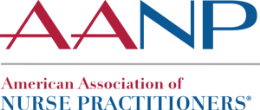Overdose Awareness Day: End Stigma and Increase Patient Access to Care

By Alex Fernandez
Explore how nurse practitioners can support patients with opioid use disorder and improve clinical outcomes.
August 31 is International Overdose Awareness Day. During this annual event, people all around the world strive to end overdose, reduce the stigma surrounding substance use disorder (SUD) and acknowledge those whose lives were forever changed or lost due to overdose. According to the Centers for Disease Control and Prevention (CDC), there were an estimated 107,622 drug overdose deaths in the United States during 2021, an increase of nearly 15% from the 93,655 deaths estimated in 2020. The true impact of overdose — and the ongoing opioid epidemic — stretches far beyond these numbers. It dramatically alters the mental health and well-being of victims’ families and communities. Now more than ever, nurse practitioners (NPs) play a critical role in helping curb the crisis of opioid use disorder (OUD) and other SUDs.
Understanding the Opioid Epidemic
On October 26, 2017, the U.S. Department of Health and Human Services (HHS) declared a nationwide public health emergency (PHE) to address the opioid crisis. At that time, data from the CDC showed that more than 140 Americans were dying from overdose every single day, with 91 of those deaths stemming from opioid use. In its statement about the PHE, HHS cited data from 2015 that showed an estimated 52,404 people died from drug overdose in the U.S that year. Unfortunately, that is less than half the number of overdose deaths estimated in 2021.
The growing opioid epidemic and related increase in OUD have been a catalyst for this rise in overdose deaths. In 2020, opioids were involved in 68,630 overdose deaths — 74.8% of all drug overdose deaths. While prescription opioids and heroin were the most prevalent causes of overdose in 1999 and 2010 respectively, the most recent spike in overdose deaths has been attributed to synthetic opioids, such as illicitly manufactured fentanyl. To ensure NPs are equipped with the latest evidence-based resources and continuing education (CE) related to OUD, the American Association of Nurse Practitioners® (AANP) has compiled informative tools and CE activities to help you diagnose and treat patients in your community.
Supporting Those Affected by SUD
All SUDs impact an individual’s physical wellness and mental health, and the impact of these disorders extends to the partners, families and communities of those individuals with an SUD. However, the stigma surrounding SUD often keeps those in need of treatment from seeking the help they need. To reduce stigma and boost patient access to SUD care, it’s important to increase awareness of SUD as a disease that can happen to anyone.
As an NP, you can make a positive difference by reminding your patients and community members that help is within reach and informing them of services, such as the Substance Abuse and Mental Health Services Administration (SAMHSA) National Helpline, that offer confidential, free and round-the-clock information for individuals with SUD or other mental health challenges and their family members. In 2020, Congress also designated the new dialing code 988 to be operated through the existing National Suicide Prevention Lifeline for individuals who are struggling or in crisis. Prepare to eliminate overdose stigma in your community by reviewing the health care provider tools, training and technical assistance offered by SAMHSA, and continue to improve mental health outcomes for your patients with these AANP psychiatry and mental health resources.
Improving Patient Outcomes for OUD
NPs first obtained temporary authority to receive a Drug Addiction and Treatment Act of 2000 waiver (DATA-waiver) in order to prescribe medication-assisted treatment (MAT) for OUD in the Comprehensive Addiction and Recovery Act of 2016 (CARA). Recognizing the importance of NPs to fighting the opioid epidemic, in 2018 Congress then made this authority permanent in the SUPPORT for Patients and Communities Act. Since first obtaining the authority to prescribe MAT in CARA, NPs have been critical to increasing patient access to MAT across the U.S. One medication used to reduce debilitating cravings and withdrawal symptoms in patients with OUD is buprenorphine, and the number of buprenorphine waivers among NPs has grown to more than 22,000 in just five short years. More recent guideline changes regarding the treatment of OUD now enable NPs to treat up to 30 patients with MAT without meeting all of the requirements for a DATA-waiver, and to treat up to 100 patients in the first year and up to 275 patients in subsequent years for NPs (and other qualified practitioners) who undergo the required training and receive their DATA-waiver.
The impact NPs with MAT waivers have is most strongly felt in rural communities, which lack the services and OUD treatment facilities that are more prevalent in non-rural areas. According to research published in Health Affairs, after the passage of CARA, NPs (and PAs) became the first-waivered clinicians in 285 rural counties covering 5.7 million residents. With fewer health care providers and facilities in these rural areas to diagnose and treat patients with OUD, NPs are a vital force for positive change. Additional details about the response to the opioid epidemic in rural areas are available within the Rural Health Information Hub.
Enroll in Free Buprenorphine Waiver Training Today
MATs, such as buprenorphine, are crucial to improving outcomes for patients with OUD. Complete the free NP/PA Buprenorphine Waiver Training in the AANP CE Center to gain valuable insights about OUD treatment.
This two-part CE activity fulfills the 24-hour training requirement for NPs to obtain their DATA-waiver. Register today to increase your knowledge of evidence-based practice for MAT use and to complete all educational requirements needed to successfully apply for a buprenorphine waiver.

